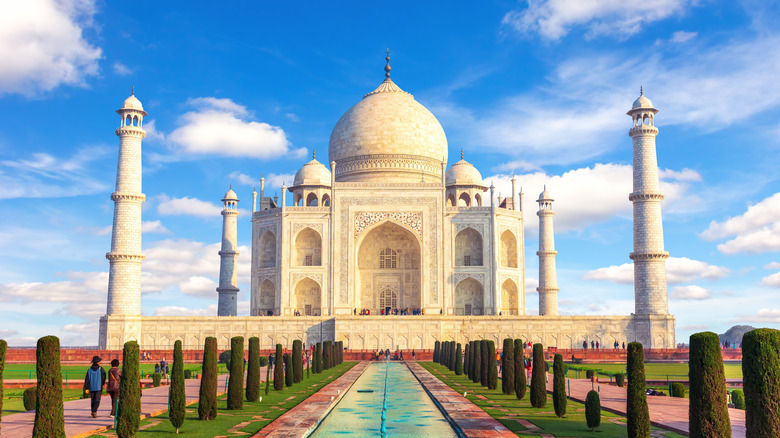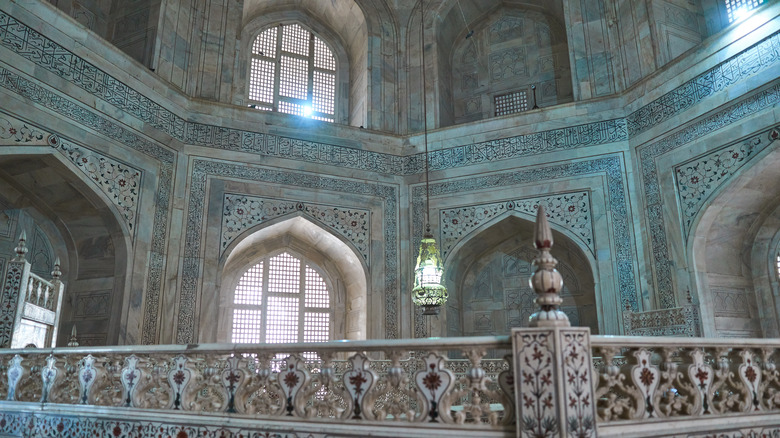How The Taj Mahal Was Nearly Destroyed
The Taj Mahal is one of the most popular tourist destinations and historical landmarks of India. Constructed over the course of several decades in the 17th century, the Taj Mahal is a massive marble mausoleum built to house the remains of empress consort Mumtaz Mahal. The building is a lasting testament to the engineering and artistry of the Mughal Empire, but in relatively recent history, it faced possible demolition while it was under British control.
Deconstruction has been the fate of many historic structures. Hadrian's Wall, the limestone exterior of the Pyramids, and the Colosseum were pillaged as sources of readily available stone. Often this was the result of centuries of peasants carrying them off for homes, but, in other cases, such sites were deliberately ransacked. In the 1204 sack of Constantinople, buildings were destroyed and many ancient treasures melted down into coins or raw metal. In the 1830s, a similar fate might have befallen the Taj Mahal as well (via Live History India).
The Taj Mahal escaped destruction but still needed immense repair
In 1830, Lord William Bentinck was the first to gain the title Governor-General over British-controlled India. As the highest authority in the region, Bentinck made a surprisingly decent number of beneficial social reforms to India. However, he disregarded the Taj Mahal as unremarkable and lacking in any preservation-worthy qualities, and when the issue of a new government house came up he supposedly set his eyes upon its marble (via The Journal of the Royal Asiatic Society of Great Britain and Ireland). Bentinck's plan to demolish the structure and sell the material to local aristocrats was seemingly only halted when the looted marble of the Agra Fort yielded poor revenue (via Live History India).
This plot by Bentinck is mired in controversy, as it could be part of a slander campaign with little basis in truth. Either way, such a worst-case scenario did not play out, although the mausoleum was not unscathed by the British. According to Mental Floss, the Rebellion of 1857, in which several different Indian factions rose up against the British East India Company, was a devastating time for the Taj Mahal. The building's art, fittings, and any artifacts within were taken by British forces, and it was only decades later that a British-led restoration effort was undertaken to bring it to its modern state.

